Seizing Russian Assets is Legally & Strategically Imperative
Some G7 leaders are worried about the kind of precedent seizing $300 billion of frozen Russian state assets might set. They should be more worried about the precedent they’d set if they don’t.
Shortly after Russia’s full-scale invasion of Ukraine in February 2022, G7 countries froze $300 billion in Russian central bank assets held in their financial institutions. Since then, these piles of money have sat in western bank accounts - earning interest and still legally belonging to the Russian state, even as Russia’s government can’t access it.
Originally designed to paralyze Russia’s ability to continue its war against Ukraine, the freeze sent the Russian Ruble into a tailspin in 2022. But Russia’s economy has since gotten itself on a surer war footing, and the frozen assets remain on the sidelines. G7 leaders promise that Russia will only get them back once it pays Ukraine reparations for the damage its full-scale invasion has caused. But Russia has demonstrated no interest in doing this, and the West has yet to find the will to confiscate the assets. What was designed as a pressure tool has turned into a sad stalemate, with Western leverage weakening with each day it delays. All this happens at a time when Ukraine’s needs are both growing and becoming more urgent.
Until now, Russia has already done more than $450 billion in damage to Ukraine. The frozen $300 billion is no longer leverage for forcing Russia to pay Ukraine growing damage reparations. One must also remember: Russia has never paid reparations in its violently imperial history.
These two factors have prompted Ukraine’s government and civil society to argue for seizing Russia’s assets and transferring them to Ukraine now, instead of waiting until the end of the war to tally up the overall reconstruction bill. The reasons are straightforward. First, reconstruction is an ongoing cost. To be able to continue some semblance of life in Ukraine and to fight back, Ukraine needs to continually repair the infrastructure Russia attacks. It can’t afford to wait until war’s end. Second, the war’s ultimate outcome has a clear influence on its overall cost to Ukraine and its western supporters. Using the frozen assets now would allow Ukraine more room to reconstruct on the fly and to purchase the weapons and equipment it needs to make victory over Russia more likely.
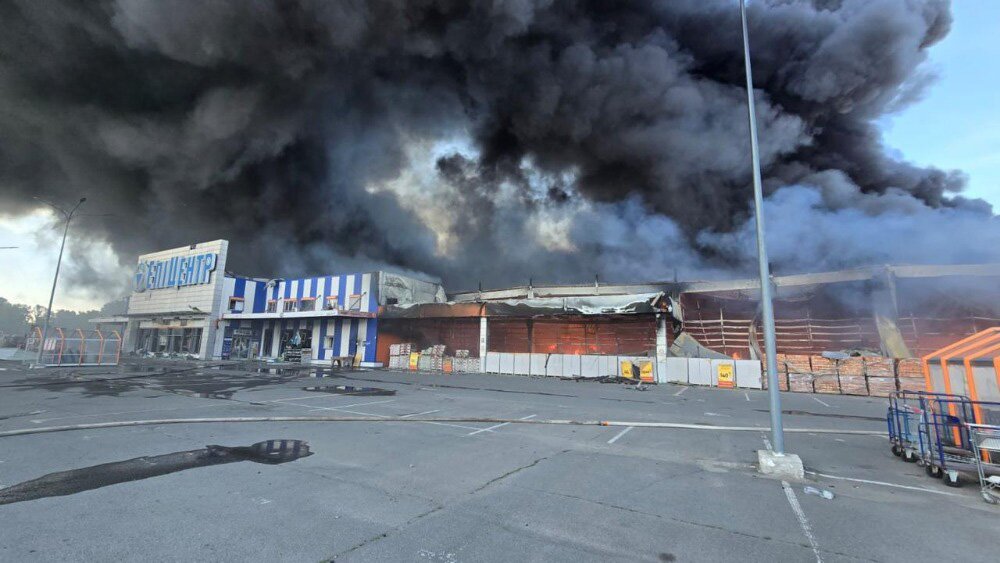
Kharkiv "Epicentr" DIY store hit by Russia in May 2024. CC-BY-4.0 Ukraine Emergency Service
Will Russia’s assets make a difference for Ukraine?
Most of Russia’s $300 billion sits in accounts with Belgium’s securities depository Euroclear and correspondent banks. However, different countries have claims to this money. Eight percent of this sum is denominated in U.S. Dollars and, hence, falls under U.S. jurisdiction. Nine percent of the total is in Canadian dollars, 16 percent in British pounds, and 3 percent in Australian dollars. Europe’s share is the remaining 63 percent denominated in euros.
To put this sum in perspective, total global aid packages for Ukraine in the first two years of the full-scale war amounted to about $380 billion. The American share amounts to about $71 billion, with U.S. Congress’s recently approved aid package greenlighting the allocation of another $60 billion. European Union institutions have provided about $91 billion in direct assistance, with Germany footing about $24 billion of its own as the second-largest individual contributor to Ukraine overall.
In short, $300 billion in frozen Russian assets has significant game-changing potential for Ukraine. This comes at a time when Russia is outfiring Ukraine on the battlefield and western domestic politics – particularly but not exclusively in the U.S. – leave open questions about the stability of western support long-term.
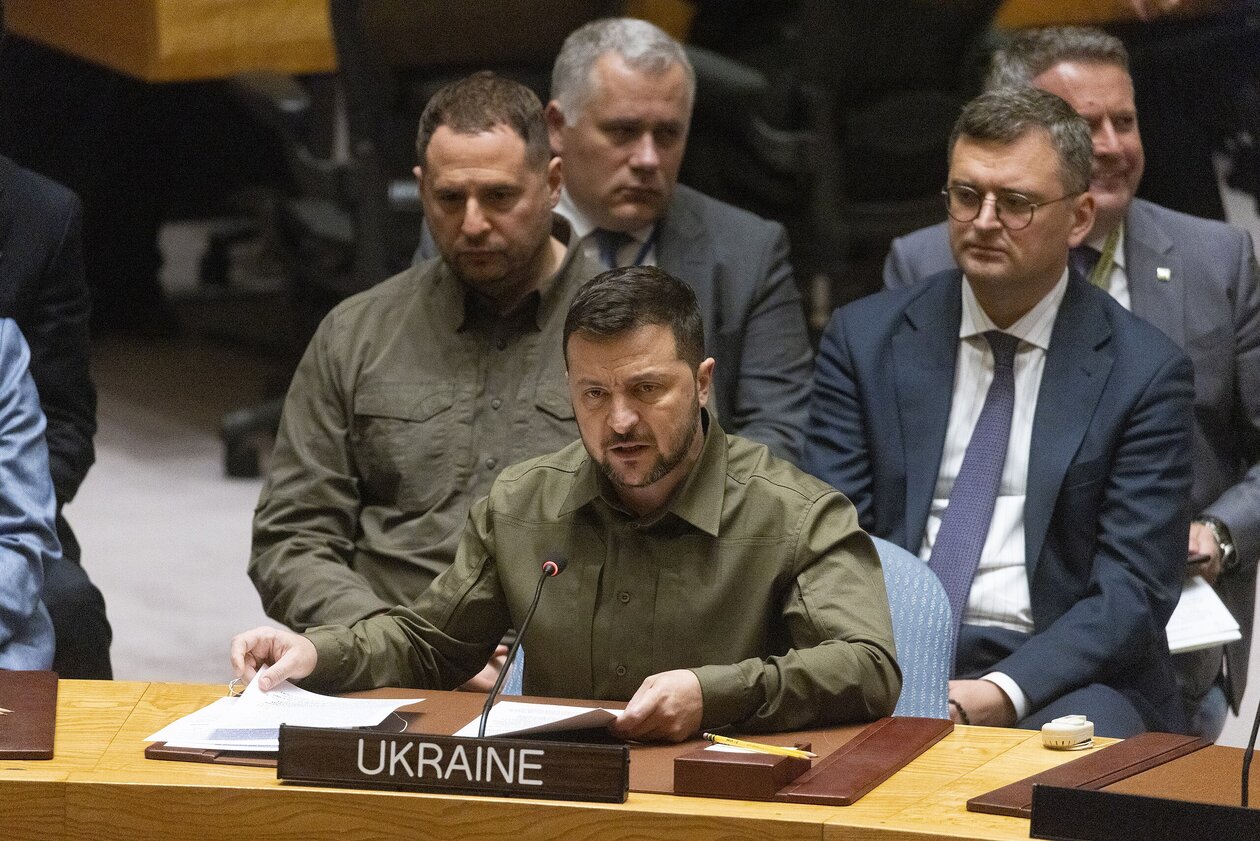
President Volodymyr Zelenskyy at the United Nations. Public domain, UK government
Why haven’t western leaders just seized these assets?
The political and strategic case for seizing Russian state assets is clear. Doing so would throw Ukraine an invaluable lifeline and increase the likelihood of its victory – the only overall outcome of the war that would deter Russia from trying its aggression on a NATO state. It would also shield Ukraine from domestic political variables in supporting countries, by demonstrating to western publics that dirty Russian money isn’t getting left on the table.
Most importantly, it would set up a new strategic deterrent. Other countries thinking of invading their neighbors would have to reckon with their assets being seized if they did so. The world’s authoritarians would get a loud message through the Russian precedent: “If you attack your neighbor, you will pay.” Making aggression more expensive ultimately makes it less likely.
The U.S. recently became the first country to approve legislation allowing the President to seize Russian assets, even if President Joe Biden has yet to use this new power. Similar draft legislation is moving through Canadian parliament. British Foreign Minister David Cameron, Estonian Prime Minister Kaja Kallas, and Polish Prime Minister Donald Tusk have all voiced support publicly. Meanwhile, France, Germany and other eurozone countries, including Belgium where Euroclear bank is based, remain opposed to seizing all $300 billion in Russian state assets. The reasons for their opposition are largely political, yet they employ both legal and economic arguments to justify their opposition.
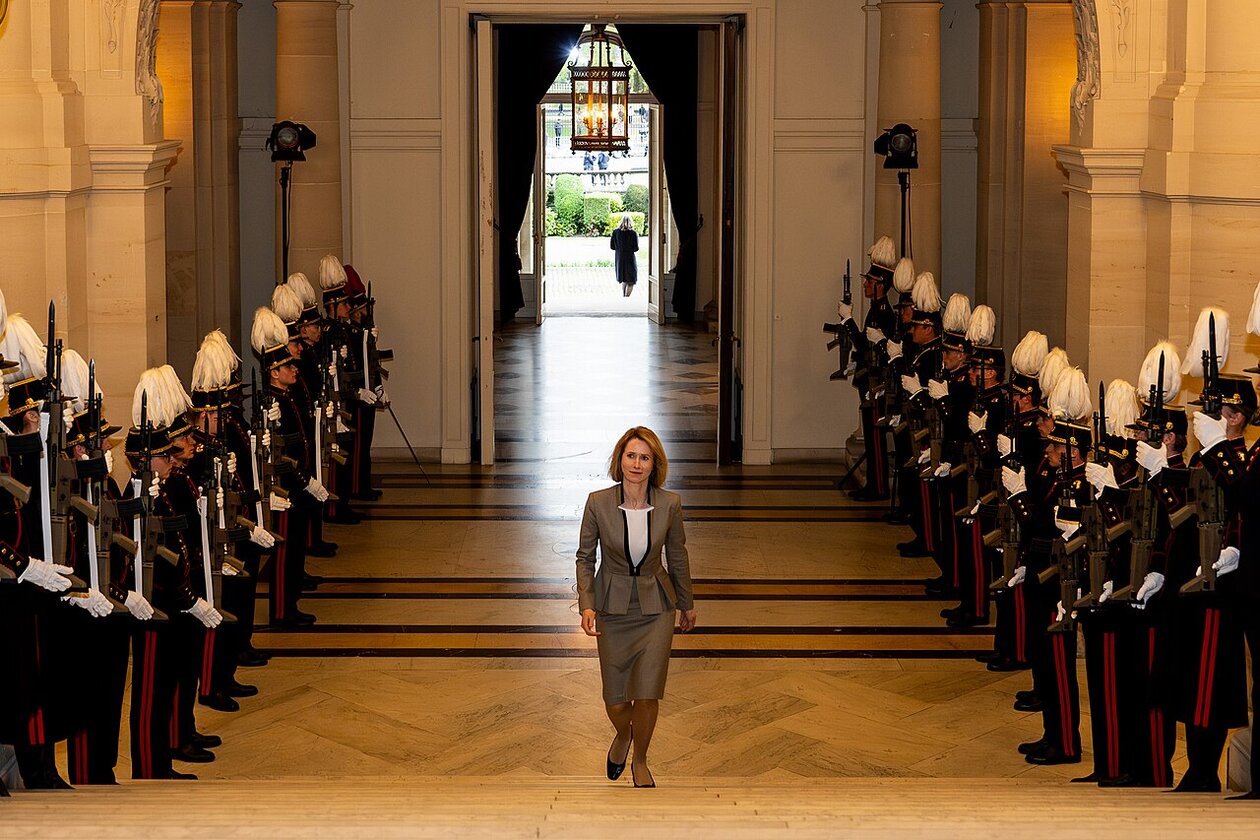
Estonian President Kaja Kallas attending Brussles. Photo: belgium24.eu CC-BY-4.0
Is seizing Russian assets legal?
Yes. Some of the world’s most prominent legal scholars, practitioners, and experts have already established the legality of seizing and transferring Russian state assets under the international law doctrine of state countermeasures. The basic principle is that a country only benefits from non-interference with its property rights when it is abiding by international law. Practically every international body acknowledge that Russia has violated the fundamental cornerstone of international law by waging an unprovoked war of aggression against Ukraine. An aggressive and genocidal repeat offender cannot and should not enjoy the same non-interference benefits as other law-abiding countries. It’s also not disputed that under international law, Russia owes reparations for the damages it caused. Hence, Russia has violated two obligations: the aggression itself, and the duty to pay reparations.
When a country’s misconduct is so egregious that it violates the very core norms of international law, it’s considered to affect the entire global community. Effectively, any country has now the right, arguably even the duty, to take countermeasures to bring the recalcitrant country back into compliance with the international norms it is violating. By transferring assets to an international compensation fund, participating countries would cause Russia to comply with its obligation to make reparations to Ukraine.
What about Russia’s sovereign immunity that allegedly supposed to protect the country’s assets? Sovereign immunity is a concept that prevents the national courts of one country from sitting in judgment of the governmental acts of another country, or from executing upon the other country’s assets. Without court action, state immunity does not come into play. The countermeasures would be adopted and implemented strictly by the executive branch of government, by legislation, or by cabinet decisions in parliamentary systems. They would be acts of state which are not ordinarily regarded as justiciable. It can be counterintuitive that a sovereign’s property can be taken lawfully outside of judicial procedure. But the rules for individuals and private property versus the rules for countries are different. Individuals absolutely do have due process rights. But the recourse for countries, under international law, is different.
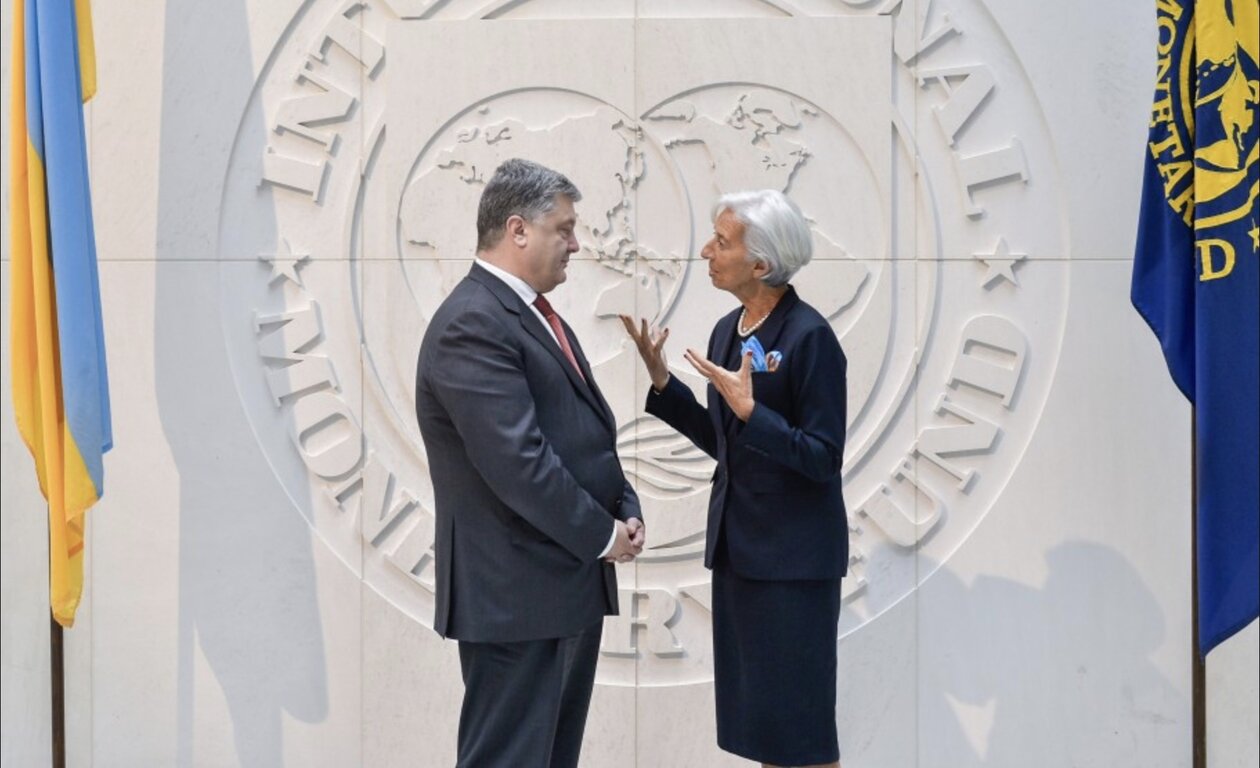
Christine Lagarde and Ukraine's 5th President Poroshenko in 2017. Photo: President.gov.ua CC-BY-4.0
Let’s now look at countermeasures that could be employed against Russia. Countermeasures are, by definition, state acts that would ordinarily be wrongful, such as interfering with sovereign property, but the wrongfulness of the act is precluded because the action is taken against another country for its serious violation of international law. Countermeasures, such as asset freezes and asset seizures, are not an ‘exception’ to international law; they are a core part of it. They are described as a ‘self-help’ tool for enforcing international law, especially in situations where centralized institutions like the UN are unable to do that. Unlike what the Russian government would have us believe, seizing Russia’s frozen reserves is not theft. It is a debt to be enforced.
European Central Bank President Christine Lagarde recently said that forcing Russia to pay would ‘break the international order you want to protect’. Lagarde actually has it backwards. Property was never meant to have more protections than human rights, or international peace and security, and our existing international legal doctrines and jurisprudence reflect that norm. In the case of Russia’s full-scale invasion of Ukraine, far from breaking the rule of law, by confiscating Russian assets for use to compensate victims of Russia’s war, third party countries would be complying with their obligations to uphold the rule of law and international order. If taken, this step will be in full accordance with the norms in the UN Charter and the Genocide Convention voluntarily subscribed to by all nations, including Russia. It is fully legal for Ukraine or its allies to destroy Russia’s property, for example tanks or navy vessels, amid Ukraine’s self-defense, fighting against Russia’s illegal aggression. It is also legal to confiscate Russia’s property for the same reason.
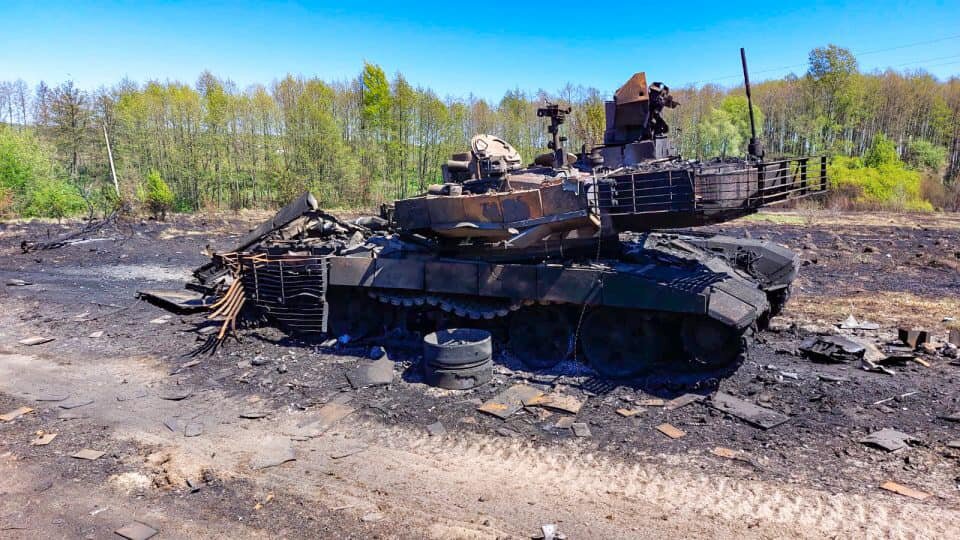
A destroyed Russian tank in Ukraine. Photo: АрміяInform, CC-BY-4.0
Is there any economic risk for the G7 or Ukraine?
The argument that seizing Russia’s reserves would undermine the financial market or cause flight from G7 currencies has been shown to be largely overblown. The predictions for dire consequences for international finance are not backed up by any cogent explanation of underlying assumptions or logic. That’s because any negative effects would already have been triggered when the G7 froze those assets in early 2022. Yet, there have been little to no observed consequences. By freezing the reserves for until Russia pays a sum greater than the G7 is holding, the G7 has already made it clear that aggressors’ reserves are not safe in the G7 countries. As UK Foreign Minister, Lord Cameron, said, there is unlikely to be a ‘chilling effect’ on inward investment, as those investors likely to feel perturbed would already ‘be pretty chilled by the fact we have frozen’ the assets.
Further, there are few safe alternatives to the established financial system. Together, the dollar, euro, pound sterling, and yen amount to 89.2 percent of the world’s reserve currencies. The Chinese renminbi is not a realistic alternative due to China’s strict capital controls and the high likelihood of expropriation. There are simply no other viable reserve currencies for countries to invest their reserves. As former President of the World Bank Robert Zoellick points out, ‘China and other economies do not hold dollars or euros because they are friends with Europe and the U.S.’
In the end, seizing Russian assets is not a financial decision. It is a national security decision that should be made with western national security interests at the core. The bigger risk on the reserve currency front is if the west fails to adequately fund Ukraine, resulting in it losing the war. That would represent a seismic hit to the security of Europe: where will Russia invade next? This would deplete confidence not just in the euro, but in the stability of Europe itself.
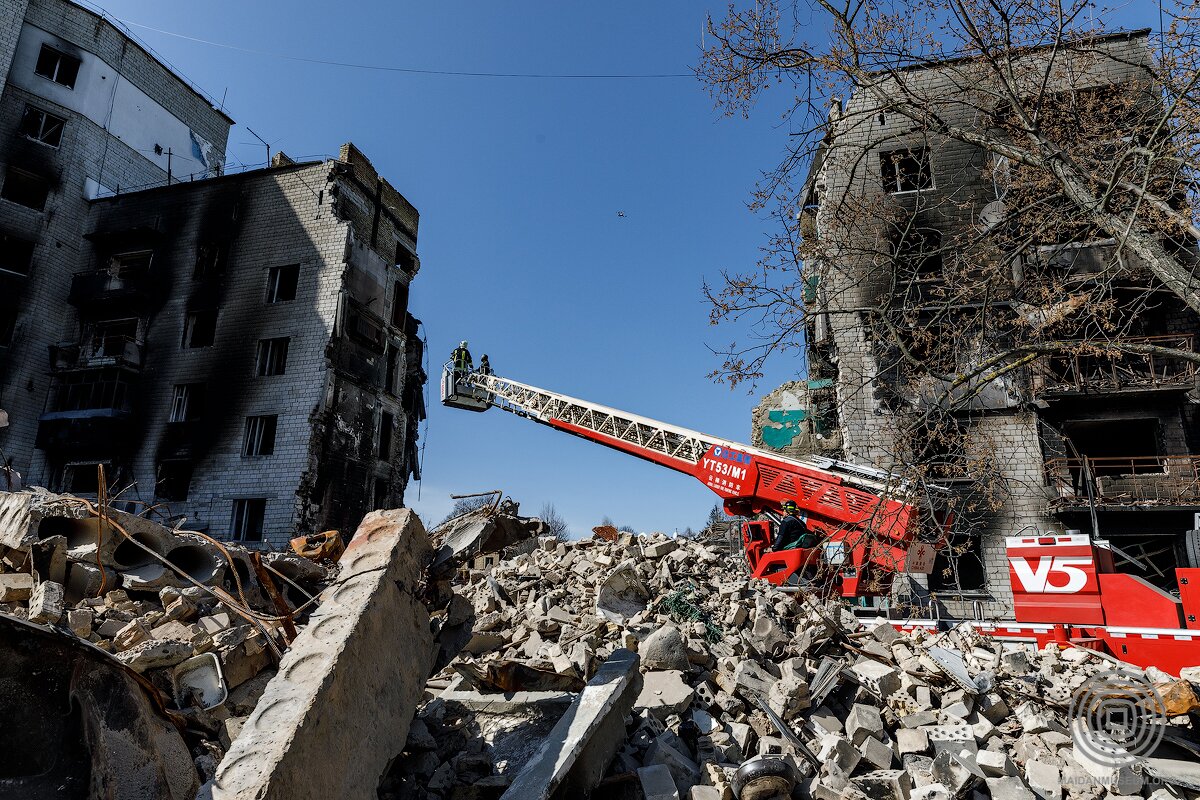
Rescue works in Ukrainian Borodyanka. Photo: National Memorial to the Heavenly Hundred Heroes and Revolution of Dignity Museum / Bohdan Poshyvailo, CC-BY-4.0
Are there alternatives to seizing the whole asset?
The G7 have recently signaled fudging some sort of ‘creative’ alternative to seizing all $300 billion in Russian state assets – as a note on the upcoming Canadian budget made clear. These alternatives, however, provide neither the sufficient resources to Ukraine, nor do they avoid the legal precedents the G7 currently seem afraid to set.
The recent EU agreement on only using the profits from Russia’s frozen reserves, but not the reserves themselves, is inadequate to provide Ukraine with the amounts needed for its victory and reconstruction. According to economist Tim Ash, there’s a $100 billion a year price tag for keeping Ukraine in the war, and likely a $50 billion a year price tag to fund post-war reconstruction. Yet, it is estimated that the profits earned on the frozen assets is approximately $3 billion per year. The EU agreement is a stopgap measure that unjustly withholds hundreds of billions of dollars that Ukraine is already owed under international law. Moreover, the agreement only concerns profits accrued by Euroclear since mid-February 2024 and does not apply retroactively to approximately $5.2 billion in profits accumulated in 2022-2023. These profits were accumulated as a result of the international community’s decision to immobilize Russian state funds as a direct response to Russia’s unlawful war. Retaining two years’ worth of windfall profits positions Euroclear as Western Europe’s largest war profiteer with an unjustly granted power to prevent victims of the war, who are in dire need of funds, from rebuilding their lives.
Another set of emerged proposals is issuing bonds backed by frozen Russian state assets. In one of the proposed scenarios, the frozen assets would be the ‘collateral’ if Russia does not pay: the frozen assets would then be seized to satisfy the debt obligation. Under another proposal put forth by the U.S., the debt would be backed by future profits from the frozen Russian assets.
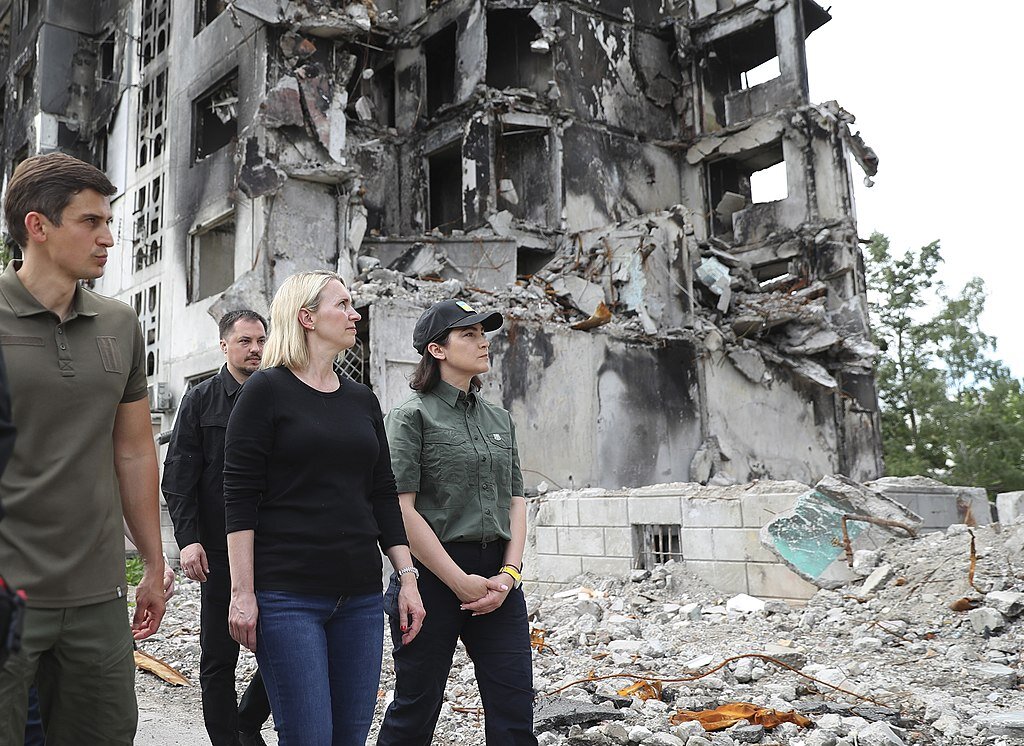
U.S. Ambassador Bridget Brink visits ruins of Borodyanka. Photo: U.S. Embassy, public domain.
However, neither of these alternative proposals are a workable substitute for full confiscation of the frozen Russian funds. If one follows the EU argument that these assets cannot be legally confiscated, then how would they be used as the collateral? This scheme assumes that the G7 will seize the $300 billion from Russia in the future, while those same governments have failed to do exactly that over the past two years. What is also unclear is whether investors will sign up to this scheme at all, or how long it would take to raise funds through issuing bonds.
Under the second proposal, $50 billion of bonds would be issued against future profits generated by the frozen assets. The assets would have to remain frozen until the profits generated paid off the bonds, estimated at 10 years. Rather than unlocking $300 billion worth of funds, this proposal would reduce the amounts available to Ukraine to only a fraction of that sum, while simultaneously locking up the principal amount of the frozen reserves for at least 10 years. In effect, this proposal performs a magic trick of turning $300 billion into $50 billion. In the end, these ‘creative’ proposals are only making the legally permissible act of seizing Russia’s assets more legally, politically, and financially complicated.
What must happen now?
There is no credible alternative to seizing all $300 billion in frozen Russian assets and giving them to Ukraine. Such a solution strengthens, rather than weakens, international law, while being economically feasible. It also is both morally and strategically imperative. As Russia’s war against Ukraine makes clear, the only way to deter Russia, or other authoritarians who are closely observing the west’s reaction to Russia’s invasion, is to show strength and resolve. Putin and other authoritarians will interpret any ‘creative’ alternative the G7 may try as a fudge and a signal of fear and unwillingness to back up its stated principles with decisive action.
The decision to seize or not to seize – as well as how and how much – will set a precedent either way, by showing strength or weakness.
The simplest solution here is the best. The G7 must seize all $300 billion of Russian state assets and send a clear message of strategic deterrence: “Aggressors must and will pay.”